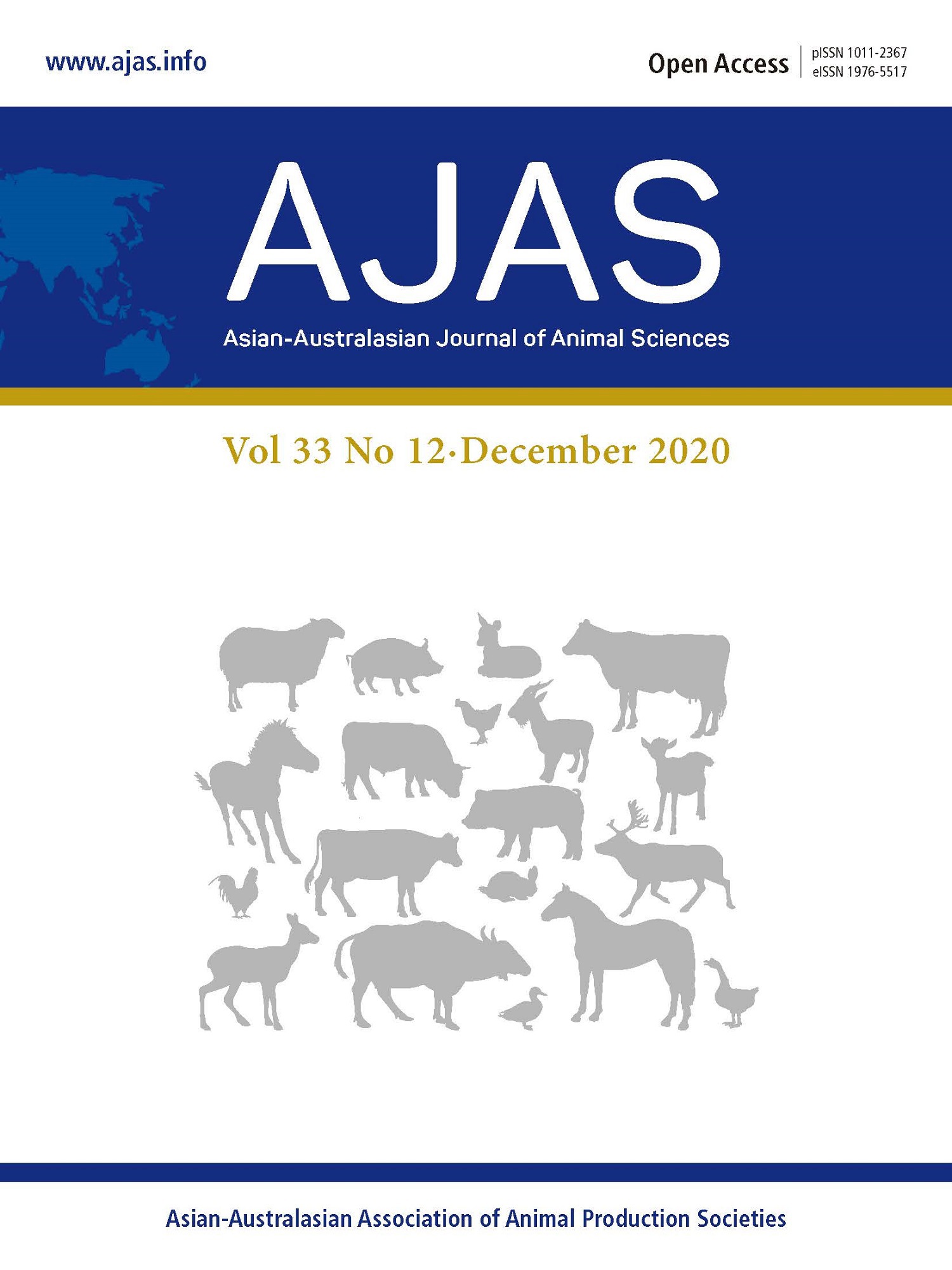Methodology effects on determining the energy concentration and the apparent total tract digestibility of components in diets fed to growing pigs
Chengfei Huang1, Ping Li2, Xiaokang Ma1, Neil William Jaworski3, Hans-Henrik Stein4, Changhua Lai1, Jinbiao Zhao1, and Shuai Zhang1,*
1 State Key Laboratory of Animal Nutrition, College of Animal Science and Technology, China Agricultural University, Beijing 100193, China
2 Institute of Animal Science, Guangdong Academy of Agricultural Sciences, Guangzhou 510640, China
3 Trouw Nutrition, Veerstraat 38, 5831 JN Boxmeer, The Netherlands
4 Department of Animal Sciences, University of Illinois, Urbana, IL 61801, USA
Asian-Australas J Anim Sci. 2018 Aug;31(8):1315-1324. doi: 10.5713/ajas.17.0761. Epub 2018 Jan 26.
- Swine
- Open Access
- 2018

Abstract
Objective: An experiment was conducted to investigate the effects of different diet formulations: F1 (Two complicated basal diets containing different crude protein levels plus tested feedstuff) vs F2 (A simple corn soybean meal [SBM] basal diet plus tested feedstuff) combined with total collection (TC) or chromic oxide (Cr2O3) marker or acid-insoluble ash (AIA) marker method, and freeze-dry or oven-dry (OD) technique on estimation of nutrient digestibility in diets fed to growing pigs.
Methods: In F1, twelve barrows were allocated to two 6×4 Youden Squares. The treatment diets included a high protein basal (HPB) diet, a low protein basal (LPB) diet, a corn diet and a wheat bran (WB) diet formulated based on the HPB diet, and a SBM diet and a rapeseed meal (RSM) diet formulated based on the LPB diet. In F2, eight barrows were allocated to two 4×4 Latin Squares. The treatment diets included a corn basal diet, a SBM basal diet formulated based on the corn diet, and a WB diet and a RSM diet formulated based on the SBM diet.
Results: Concentration of digestible (DE) and metabolizable energy (ME), and the apparent total tract digestibility of gross energy, ash, neutral detergent fibre, and acid detergent fibre determined by Cr2O3 marker method were greater than those determined by TC and AIA marker methods in HPB, LPB, and RSM diets formulated by F1 and in corn diet formulated by F2 (p<0.05). The DE values in WB and both DE and ME values in SBM and RSM estimated using F1 were greater than those estimated using F2 (p<0.05).
Conclusion: From the accuracy aspect, the AIA marker or TC method combined with OD technique is recommended for determining the energy concentration and nutrient digestibility of components in diets fed to growing pigs.
Keywords: Digestibility; Drying Methods; Index Marker; Total Collection; Barrows.